
KJ Howe welcomes talented author and police expert, James O. Born who talks about common mistakes in fiction. If you have any questions for James, please fire away. He'll do his best to answer.
I am of fan of books and authors. No matter the genre, no matter the subject, I can usually find something I appreciate and enjoy in every area. I happen to write novels in the area of crime. We like to call it “Crime Fiction” as opposed to “Mystery”. No real reason other than I like to explain that my books tell more about how crimes are solved rather than guessing who did it. I’d prefer to write fantasy like the story of a middle-aged, slightly over-weight cop that women find irresistible. Regrettably that would be the genre of science fiction.
My career before writing, as a U.S. drug agent and state police officer, has given me an insight into realism in crime stories. Let me stress right now that good story-telling and writing are far more important than realistic tactics and situations. That being said, there are some common mistakes that frustrate military and law enforcement people. These are easily correctable story bumps that wouldn’t effect the plot or characters.
The most obvious mistake to me is when a cop “racks” the slide of his or her automatic pistol before they enter a room. That action, when an officer grasps the top of an automatic pistol and pulls back the slide, means the pistol did not have a bullet in the chamber and was useless. That would indicate the cop is an idiot and should be fired on the spot. It looks good in movies but it is the mark of the clueless.
Another common mistake is a writer putting a safety on a revolver. “He fumbled with the safety allowing the killer to knock it from his hands.” Some bull like that appears in a number of detective novels and movies. Modern revolvers do not have safety levers on them. Revolvers generally carry six rounds of ammo (the exception being compact five-shot “back-up” revolvers). Revolvers are reliable, usually slightly more bulky than a comparable automatic pistol and quickly fading form the professional law-enforcement ranks. When I graduated from the DEA academy, I was issued a Smith & Wesson model 13 revolver. I doubt if most recruits in the academy today have even seen a Smith & Wesson model 13.

Guns don’t go off when dropped on the ground. There may be the fluke or freak of physics that causes an accidental discharge (that sounds vaguely sexual) but in the real world the gun going off, causing a distraction, is about as likely as Andy Dick making a funny movie.
It is very difficult to race the ownership of a handgun if it has been bought and sold a couple of times. Books and movies make it seem like the ATF or FBI can go to a random computer and call up everyone who has ever had contact with a handgun. In real life it would take a determined cop to search forms then conduct any number of interviews, relying on people to tell the truth and hoping that the weapon had never been stolen, to get an idea who had own a gun prior to a crime.
Now these are just a few of the gun related items that come to mind. K.J. Howe is a nut for research and getting things right in her novels. That was one of the reasons I knew I couldn’t say no when she asked if I could contribute to the blog. Don’t think I’m a gun nut or won’t read a book that’s not 100% accurate in realistic details. I like creativity and good characters. I read for plot and emotion. But one thing I’ve learned; if you put in some tidbit that’s not accurate one of your faithful readers will definitely let you know.
My career before writing, as a U.S. drug agent and state police officer, has given me an insight into realism in crime stories. Let me stress right now that good story-telling and writing are far more important than realistic tactics and situations. That being said, there are some common mistakes that frustrate military and law enforcement people. These are easily correctable story bumps that wouldn’t effect the plot or characters.
The most obvious mistake to me is when a cop “racks” the slide of his or her automatic pistol before they enter a room. That action, when an officer grasps the top of an automatic pistol and pulls back the slide, means the pistol did not have a bullet in the chamber and was useless. That would indicate the cop is an idiot and should be fired on the spot. It looks good in movies but it is the mark of the clueless.
Another common mistake is a writer putting a safety on a revolver. “He fumbled with the safety allowing the killer to knock it from his hands.” Some bull like that appears in a number of detective novels and movies. Modern revolvers do not have safety levers on them. Revolvers generally carry six rounds of ammo (the exception being compact five-shot “back-up” revolvers). Revolvers are reliable, usually slightly more bulky than a comparable automatic pistol and quickly fading form the professional law-enforcement ranks. When I graduated from the DEA academy, I was issued a Smith & Wesson model 13 revolver. I doubt if most recruits in the academy today have even seen a Smith & Wesson model 13.

Guns don’t go off when dropped on the ground. There may be the fluke or freak of physics that causes an accidental discharge (that sounds vaguely sexual) but in the real world the gun going off, causing a distraction, is about as likely as Andy Dick making a funny movie.
It is very difficult to race the ownership of a handgun if it has been bought and sold a couple of times. Books and movies make it seem like the ATF or FBI can go to a random computer and call up everyone who has ever had contact with a handgun. In real life it would take a determined cop to search forms then conduct any number of interviews, relying on people to tell the truth and hoping that the weapon had never been stolen, to get an idea who had own a gun prior to a crime.
Now these are just a few of the gun related items that come to mind. K.J. Howe is a nut for research and getting things right in her novels. That was one of the reasons I knew I couldn’t say no when she asked if I could contribute to the blog. Don’t think I’m a gun nut or won’t read a book that’s not 100% accurate in realistic details. I like creativity and good characters. I read for plot and emotion. But one thing I’ve learned; if you put in some tidbit that’s not accurate one of your faithful readers will definitely let you know.
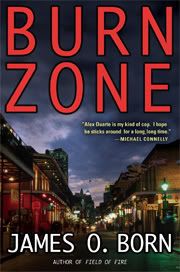 If you haven't had a chance to read James O. Born, his latest release FIELD OF FIRE is available today and his next novel featuring ATF agent Alex Duarte, BURN ZONE, is coming in Feb 08. Visit James at www.jamesoborn.com or at the Naked Authors blog on Thursdays where Jim reveals all his secrets! Jim is an entertaining speaker who shoots straight from the hip!
If you haven't had a chance to read James O. Born, his latest release FIELD OF FIRE is available today and his next novel featuring ATF agent Alex Duarte, BURN ZONE, is coming in Feb 08. Visit James at www.jamesoborn.com or at the Naked Authors blog on Thursdays where Jim reveals all his secrets! Jim is an entertaining speaker who shoots straight from the hip!Jim, thanks for joining us today!

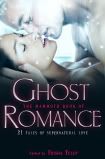

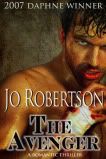
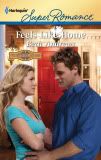
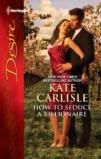

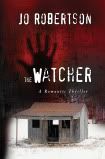



















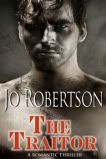




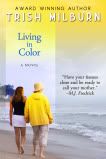
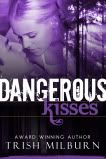









































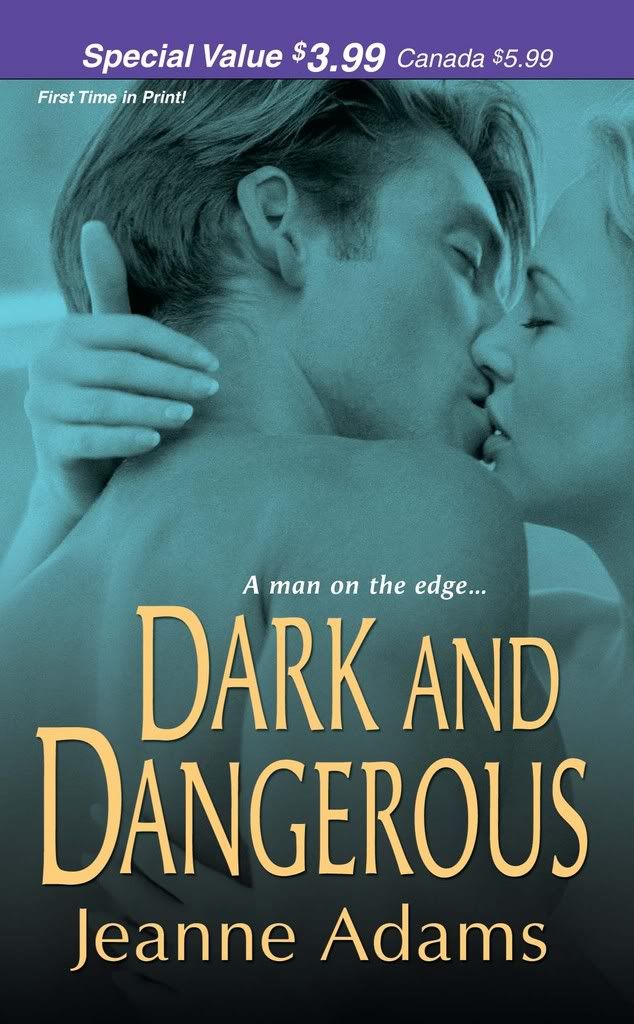



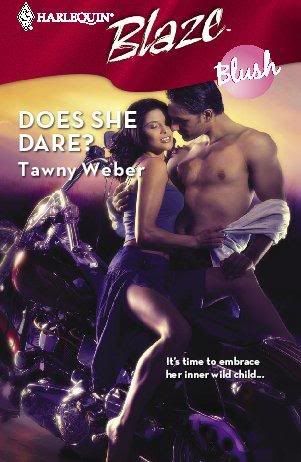





28 comments:
Thanks for posting. I knew absolutely nothing about guns before I started writing and found my characters needed them. One thing I've seen time and time again in fiction (by major players, too) is 'thumbing the safety off the Glock'.
I was told this is the biggest mistake fiction writers make, yet it seems to be prevalent. You'd think copy editors would have learned this one. Or are there Glocks with external safeties?
James, thanks for being with us! You mentioned that revolvers no longer have a safety lever. How does the safety on revolvers operate today?
Also, I have read a number of stories where a heroine carries a small, generally ineffectual, gun in her purse. Is there a very compact gun that is accurate and a heroine really could carry in her purse and use in an effective way?
James:
Thanks for the insights. I am curious as to when the officer should chamber his round if not before he enters the room? Should he chamber the round earlier in the day? Is the round in the chamber while the weapon is holstered?
I'm also very interested in the subject of police sniping. Can you tell us about some general info about ranges, weapons, optics etc? Are their myths that you can dispell?
Lastly, many fictional firefights take place at night. Can you give us a little info about how this is different from daylight events? Are nightvision devices helpful or over-hyped?
Thanks
RLD
This was a great interview, very informative. I agree that accuracy and attention to detail are critical to making a story believable. For those of us who aren't former police officers and don't know any, can you recommend a good reference for information on police procedure? Thank you.
Jim, thanks for the informative post. I saw an officer "rack" the pistol on TV just last night!
Can you give us some information on concealed-carry holsters and the types of guns that fit discreetly into them?
Thanks again!
Hi James. Great to have you on the blog.
I have a secondary character who's a sniper and need to do some research on the ins and outs of what a sniper actually does.
Are there any books you can recomment or someone to talk with?
Thanks,
Petrina
Thanks for having me guys.
I’ll tackle these one at a time.
Terry,
That’s right, Glocks do not have safeties or exposed hammers.
Caren,
There is no safety on a revolver. It won’t fire unless the trigger is pulled. There is no such thing as an ineffectual gun if it fires. Only an ineffectual shooter. A twenty-two round can kill you if it has good placement. I always suggest a Sig Sauer P-230 as a reasonable, small automatic pistol that could be hidden easily and has a small grip that smaller people could grasp easily.
RLD,
A round is always chambered. There is no reason not to have the gun loaded unless after cleaning at the range or if the officer is storing it and it is no longer his or her duty weapon.
The SWAT position of sharpshooter or counter sniper is complex and I couldn’t go into detail about it here. It’s not like the movies where the police sharpshooter hits the kidnapper then walks away. There are very few incidents where the police are forced to utilize a long rifle from a long distance.
Susan,
I would be a dumbass if I didn’t tell you to buy my books. I try to use real procedure and take a lot of heat from police officers when I screw something up.
I really don’t know of a reference book.
Nancy,
My personal experience is that flat sided automatic pistols are easier to conceal. I use an inside the pants holster and loose shirt with either a Glock or Sig Sauer. I have never had anyone notice it. Or at least notice it and then say something to me. The little .380 caliber Sig P-230 that I mentioned above is still, to me, the most versatile and concealable handgun around.
I’ll check in this evening if you guys have more questions. I really appreciate you having me stop by today.
Best,
Jim Born
Hi James and welcome to the Bandita's lair. What a great post - so informative and entertaining. My hubby is a big crime fiction fan; I'll have him check out your books.
My question isn't about guns, but about your path to publication. What made you make the leap into writing and can you tell us a bit about your journey to publication?
PS Lots of women fell in love with Sipowicz on NYPD Blue!
Hi Jim,
Welcome to the Bandit lair!
I have no particular need for gun knowledge in my Roman historicals (though if you have any insights on the gladius, curved sica or trident I'd love it :-)
At my local chapter meeting this past Saturday, we had the attendees read the first lines of their WIP. You know...talk about "the hook" etc.
One of our authors whose character is a depressed vampire had him holding a gun to his head contemplating suicide. Her opening line had a very long, complicated description of the revolver/gun he was using. Sounded like your Sig-Sauer with a LOT of specifications. i.e. 240 etc.
When I suggested that that really long description could be shortened for effect, she informed me men would think like that....
I'm not convinced or at least not if you're about to blow your immortal head off.
Me....I would see a gun and go "eek..a gun!" :-)
Hi, James. I'm wondering what the difference is between a rifle and a shotgun. If my character is holding a rifle on someone, would he "chamber" a round first? Would there be a sound that the person at the business end of the rifle hear to indicate someone had pointed it at her with the intent to fire? Thanks!
TJB
Just came by to say hi Jim. I took your workshop at ThrillerFest in Arizona and it was fabulous. I missed NY this time around, hope to make it next time . . . and hope you have another workshop.
Oh, I do have a question. Surprise. Are police and/or feds allowed to pick their own weapon or are they issued a standard weapon that they have to carry? If they wanted to carry something else, is there a process for that? What is the most common gun carried by police today as their primary duty weapon?
Thanks for being here!
Patrina,
The one book I’ve heard that people refer to is
Marine Sniper: 93 Confirmed Kills by Charles W. Henderson
Anna,
I think my path is like a lot of writers. Tons of rejection then one lucky break. I was very lucky that Putnam took such an interest in my work.
I would get frustrated reading so many outlandish police stories that I wanted to write one closer to the real thing. The situations may be fiction but the comments and procedure come from my everyday life.
Joan,
I agree with you. Shooting myself, I wouldn’t care what kind of gun it was.
TJ
A rifle fires one type of solid projectile. A shotgun can fire a slug or, as an example, buckshot, which is composed of nine round balls about .38 caliber. That provides a spread to the shot and it is an awesome and devastating round.
Rifles vary in their mechanism so it’s hard to say if you’d have to rack it. A standard shotgun would be racked.
Is there a difference in military issued weapons? For example, if a Coast Guardsman was issued a firearm, would it be standard military issue? (I know this may not be a "police" question, but I thought I'd try.)
Also, what about Homeland Security agents? Are they issued weapons like a CIA agent?
And thank you so much for answering our questions.
*off to check out details of James O. Born's book*
Welcome, Jim! Great post. And I write Regency historicals! Although I must admit to a fascination with duelling pistols. Occasionally one (well, usually two!) will turn up on the Antiques Roadshow and I'm utterly captivated.
Hey, great to see some new visitors to the Banditas. Welcome!
I must admit to a slight snicker as I read your post, Jim. Recently somebody blithely told me she wanted to write contemporaries rather than historicals because she HATES research. I basically told her she was kidding herself! Clearly, I was RIGHT!
Hi, Jim--
Thanks for taking the time to answer all our guns & ammo questions! I'm still confused about the safety issue. Did I understand correctly that there aren't safeties on revolvers because they won't go off unless you pull the trigger? I thought the idea of a safety was to keep the gun from going off even if you did pull the trigger? Thanks for clarifying!
Susan
Very interesting post thanks
Have Fun
Helen
Alison - great to have you here. I just finished Speak No Evil - awesome!! I'm saving the other two for our trip home, so I can read on the long flights without interruptions! It doesn't seem five minutes since we were on the contest circuit together *grin*.
James - thanks for telling us your story. Did any other crime writers help you on your way?
James, thanks so much for your informative post! I know nothing at all about guns, so this was an eye-opener.
Great post, James. Welcome to the Bandit lair.
I have a question about standard issue for police departments and for federal agencies, like DHS or DEA. I'm sure it depends on the law enforcement department (and maybe budget LOL), but generally speaking what weapons are issued these officers?
Hey James, nice to have a guy in the bandita lair!
And thanks for making your knowledge available to writers!
Hi Jim - thanks for visiting and for all the really great gun info.
And thanks to KJ for bringing Jim into the lair!
James, echoing everyone's sentiments. Welcome! It's so nice to see a man with a great big gun in the lair. ;-)
I'll be very interested in seeing more of your answers.
And big MWAH to KJ for inviting James to blog with us!
AC
Allison,
I’m glad you enjoyed the seminar. I can’t believe the number of nice comments I’ve received from that one talk. I supposed to do it again at Sleuthfest and a company in Los Angeles filmed it in a studio and plans to make it a DVD.
Most police agencies issue one specific weapon and have guidelines for the cops to use a different weapon if it is approved. The policies vary greatly.
The most common guns are probably Glocks and Berettas.
Jennifer,
I think the different branches of the military each have weapons they issue. The Beretta 92 is a common handgun.
Homeland security is made up of former Customs or Immigration agents. I’m not sure of their issued weapons. The title is impressive but they’re still working immigration or customs cases.
The CIA is not law enforcement and agents aren’t usually involved in any arrests or situations where a gun is necessary. At least not on purpose. I don’t know if they are issued weapons or given leeway to purchase their own weapons. It’s not like the movies. Agents from the CIA are smart and daring but not Jack Bauer.
Anna,
I like when people look down on genre writers or think one area is easier than another. Writing is hard. Period. It takes thought, preparation, patience and sometimes research. I can tell by the questions on the blog and contents of previous posts you guys agree and work hard at it.
Susan,
I know it sounds crazy but if you were around guns it makes sense. The trigger has a certain pressure before it engages the hammer. I’ve never seen one go off accidentally. An old saying is that the shooter is the most important safety. It’s a gun not a toy.
Ana,
A number of writers helped me. Elmore Leonard pushed me when I started out, since then W.E.B. Griffin, Michael Connelly, Tess Gerritsen, John Sandford and a number of others have been very helpful. I wrote a blog a few months ago on how crime writers are so generous. I will amend that to say writers tend to be generous and helpful.
Jo,
See the answer to Allison’s question. When I graduated from the DEA academy I was issued a revolver and then bought my own Beretta 92 automatic pistol.
Thanks to all of you for you’re gracious welcome. Hope to see you in the future.
Thank you so much for that answer. I didn't realize that Homeland Security was made up of Customs and Immigration officers. That's information I needed. Thank you.
*off to check out Beretta 92s*
Awesome, Jim, as always.
Thankfully my husband is a certified gun nut, and he tends to catch any and all mistakes in my novels, but it's good to know I have backup just in case.
Michelle Gagnon
aka Jim's other wife
Susan,
To elaborate a little bit on revolvers and their lack of safeties...
"Action" is a term in firearms used to describe the way the firing mechanism works. You will hear gun folks talk about "single action, bolt action, pump action" and other types of mechanisms to describe the method a firearm uses to load a round, trigger it, and eject the spent shell casing (if it's ejected at all).
There are two types of actions in revolvers. The first type is the single action revolver. With the hammer forward, a single action revolver will not fire by pulling the trigger. The hammer must first be cocked back manually. Once the hammer is cocked back, typically, a VERY light pressure applied to the trigger will send the hammer forward, striking a pin that hits the primer in a cartridge, and causes the round to fire. Single action revolvers are really the stuff of the old west. I do not know anyone who carries a single action revolver for personal defense or law enforcement purposes. And if anyone does, they should probably have their head examined.
The second type of action is referred to as "double action." If we consider the double action revolver at rest, the hammer is forward sitting on one of the six chambers. When you pull the trigger, a whole series of things happens. The cylinder rotates in the frame placing the next round in line with the barrel. Additionally, mechanisms within the revolver cock the hammer rearward. As you continue to apply more pressure to the trigger, very close to the point where the cylinder with the next round lines up with the barrel, the trigger will reach it's breaking point. At that point, the hammer will fly forward, striking the pin which strikes the round and discharges it. So the cocking and "rotating the next round into position" are accomplished by the force of pulling the trigger rearward.
Now... why would one design such a pistol without a safety? Generally, the force required to perform all of the actions that occur before the "bang" on a double action revolver is fairly high. It takes a pretty good squeeze to set them off. As a result, they really just don't go off unless someone actually pulls the trigger. Which no one should ever, ever do unless they're willing to destroy what's in front of the muzzle.
Post a Comment